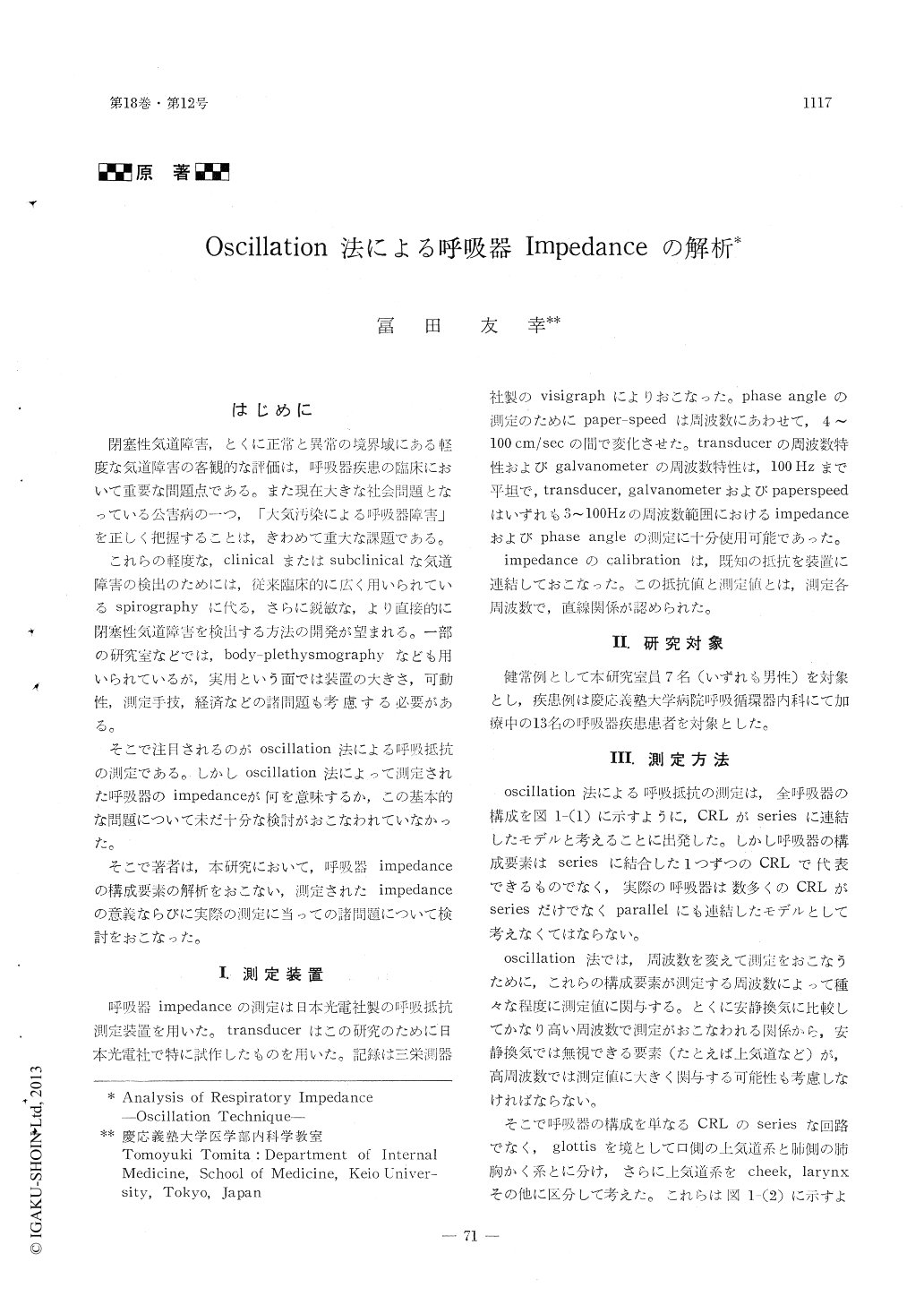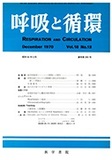Japanese
English
- 有料閲覧
- Abstract 文献概要
- 1ページ目 Look Inside
はじめに
閉塞性気道障害,とくに正常と異常の境界域にある軽度な気道障害の客観的な評価は,呼吸器疾患の臨床において重要な問題点である。また現在大きな社会問題となっている公害病の一つ,「大気汚染による呼吸器障害」を正しく把握することは,きわめて重大な課題である。
これらの軽度な,clinicalまたはsubclinicalな気道障害の検出のためには,従来臨床的に広く用いられているspirographyに代る,さらに鋭敏な,より直接的に閉塞性気道障害を検出する方法の開発が望まれる。一部の研究室などでは,body-plethysmographyなども用いられているが,実用という面では装置の大きさ,可動性,測定手技,経済などの諸問題も考慮する必要がある。
そこで注目されるのがoscillation法による呼吸抵抗の測定である。しかしoscillation法によって測定された呼吸器のimpedanceが何を意味するか,この基本的な問題について未だ十分な検討がおこなわれていなかった。
そこで著者は,本研究において,呼吸器impedanceの構成要素の解析をおこない,測定されたimpedanceの意義ならびに実際の測定に当っての諸問題について検討をおこなった。
The admittance of the respiratory system was measured on 7 healthy and 13 diseased by the forced oscillation method.
Based upon the data obtained Ⅰ analysed the fractional admittance on the lung-thorax system, the airway proximal to the glottis (upper-airway) as well as on the cheeks se-parately.
On the low cycle range (3~10 Hz) the upper airway admittance revealed low values.
On approximately 20 Hz the admittance cal-culated on the cheeks revealed significantly large values.
Over the 30 Hz range the fractional admit-tance on the cheeks was found small while the upper airway admittance (other than cheeks) was found larger.
The total respiratory impedance (other than cheeks) of diseased revealed significantly larger values on the low cycle range, but smaller values on the high cycle range, than those of healthy.

Copyright © 1970, Igaku-Shoin Ltd. All rights reserved.


